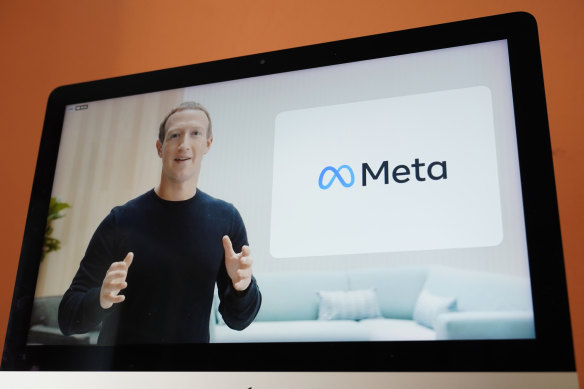Who got shafted in the big tech purge?
Mark Zuckerberg declared on Thursday that this was the year of efficiency for Facebook’s owner Meta. There are 11,000 recently axed staff who can attest that efficiency drive is already under way.
Meta’s employee purge was arguably the most aggressive and brutal among the recent spate of worldwide sackings undertaken by the big US tech companies. Although percentage wise, Twitter takes out first position.
Meta announced its third-quarter profit early Thursday morning Australian time, beating the market’s expectations on revenue but falling short on what consensus had penned in for profit.

The most noteworthy element to the Meta announcement was its decision to spend $56 billion buying back its own shares, a move that was rewarded with a 24 per cent share price boost.
Meanwhile, the tally grows daily on the wider tech body count, with estimates now having reached a combined 150,000 in 2022, with another 68,000 in January this year. And it probably isn’t over yet.
It’s no secret that the primary reason for big tech shedding staff was their enormous hiring spree during COVID in response to significant growth.
Then came the post-COVID hangover – the US and global economy slowed and the music stopped. These firms had too many bodies and not enough chairs.
While these companies have in many ways disrupted traditional business models, when it comes to cost-cutting they deploy the well-established method of reducing head count.
Twitter increased its workforce by 53 per cent over 2020 to 2021, then cut it by 58 per cent over the past year. Meta hired 60 per cent more people during COVID and has cut 15 per cent recently. Microsoft and Alphabet (Google) added close to 50 per cent more staff over 2020 to 2021 and have since slashed their respective workforces by 5.5 per cent and 7.7 per cent.
Large as these numbers are, they demonstrate that if these firms want staffing to return to pre-COVID levels, there is a long way to go.
Among the big tech names, Apple is the only one that went on a hiring binge through COVID but has yet to announce any chunky lay-offs. This position may not hold and more will be known when the firm reports on Thursday US time.
A deep dive into the make-up of those laid off conducted by data experts at 365 DataScience reveals some interesting detail.
First, the median time that those recently laid off had worked for their company was 2.5 years. This makes it clear that it was a last-in first-out redundancy drive. Those “onboarded” during COVID were the first to be “offboarded”.
The data showed that most of the staff departures took place in the US, but many tech giants slimmed their workforce in many other countries, including Australia.
While these companies have in many ways disrupted traditional business models, when it comes to cost-cutting they deploy the well-established method of reducing head count.
But it wasn’t necessarily the junior staff who were shown the door. The median years of experience came in at 11.5 years and almost half were aged between 30 and 40. In the tech world where employees generally skew young, people with that many years of experience would be quite senior – with higher salaries.
History has shown it is quite usual for firms on cost-cutting drives to hollow out mid-level higher paying professions because the salary savings are improved.
Curiously, the study found that the largest group of laid-off employees did not hold tech jobs – 27.8 per cent worked in human resources and recruitment. This is where Amazon, Meta and Microsoft focused their lay-offs.
It probably makes sense that HR isn’t as busy when hiring has ground to a near halt that poachers have become prey.
Additionally, there is a suggestion that HR roles are increasingly vulnerable to replacement by artificial intelligence (AI) – certainly the part of it that does the grunt work such as checking resumes.
Twitter and Google concentrated their lay-offs in software engineering, which was overall the second-biggest affected group among the tech giants, coming in at 22.1 per cent.
Marketing employees followed with 7.1 per cent, while customer service accounted for 4.6 per cent, and public relations and communications was 4.4 per cent.
The bad news is that, according to the sample group studied by 365 DataScience, only 10 per cent have found another job.
The Business Briefing newsletter delivers major stories, exclusive coverage and expert opinion. Sign up to get it every weekday morning.
Most Viewed in Business
Source: Thanks smh.com